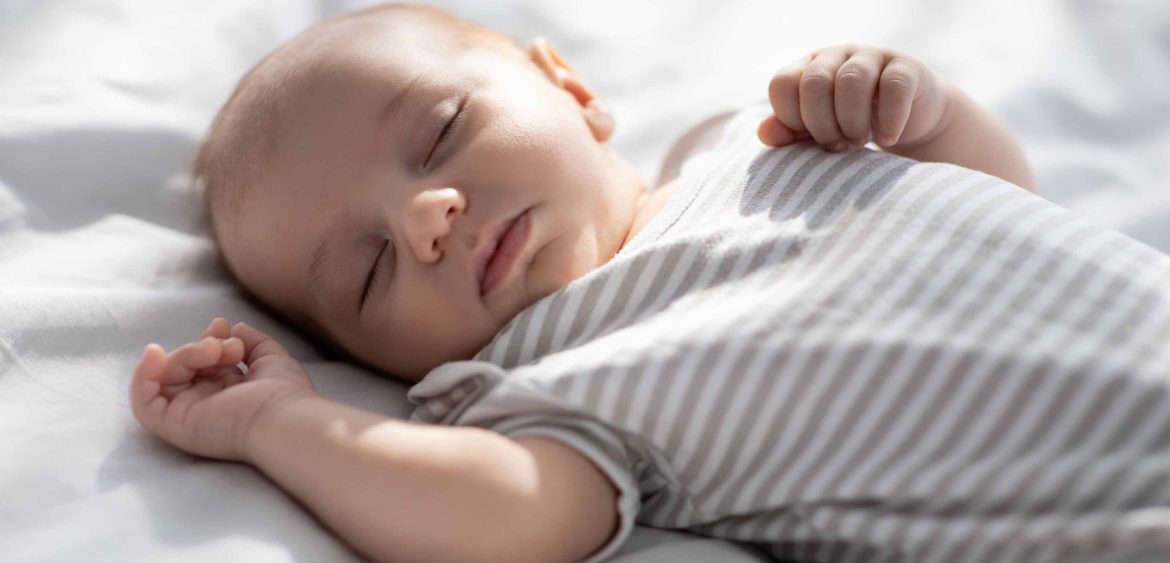Nasal congestion from colds, flu, respiratory syncytial virus (RSV), or COVID can make
it harder for babies to breathe. This may keep them awake at night (and upset family
routines, too). At this point, you’re probably desperate for a solution. But, first, it’s
important to review the basics of safe sleep for infants.
Safe sleep for infants
Every year in the U.S., some 3,400 babies die while sleeping. Many lose their lives to
Sudden Infant Death Syndrome (SIDS), which has no clear cause. Others manage to
twist or turn themselves into a position that narrows their airways. Some babies
suffocate when pillows or blankets block their mouths or noses. Based on what
research shows are the safest sleep practices, American Academy of Pediatrics (AAP)
recommends that babies always sleep flat on their backs on an even, firm
surface. Their sleep space also should be free of pillows, props, pads, blankets, stuffed
animals or other soft materials.
But shouldn’t congested babies sleep elevated so they can breathe easier?
No. It may seem harmless to prop up your baby on towels or pillows or incline their
mattress, but it is NOT safe.
Can I let my baby sleep in a swing or car seat?
I know how tempting it can be to place a fussy baby in a soothing device like a swing,
especially if YOU haven’t slept well in days. But keep in mind that your little one is
already struggling to breathe. When babies fall asleep in swings, rockers or bouncy
chairs, they can’t keep their head upright and their airway straight. So, don’t let your little
one sleep in them. Car seats and baby carriers are made to hold your baby’s head
upright or at a slight angle, but they don’t provide enough support for safe sleep. If your
little one drifts off in the car, resist the urge to carry them inside in their car seat and let
them continue napping. Always move them to a dedicated sleep space as soon as you
can.
Is my child’s crib the only safe spot for them to sleep?
It’s perfectly safe for your baby to sleep in a bassinet, bedside sleeper, portable crib or
play yard (pack-and-play) or other portable sleeper that meets CPSC guidelines . Just
make sure it’s outfitted with a firm, flat mattress with no soft furnishings.
What tips do you have to relieve my baby’s congestion?
Stuffy noses happen when the blood vessels and tissues inside your baby’s nose fill up
with too much fluid. Here are some safe ways to relieve congestion while your baby
recovers from a cold, the flu, or any other virus that causes congestion:
Nasal saline drops
This method uses plain salt water to ease stuffy noses. Place two drops in each nostril
to loosen up the congestion, then use a suction bulb to draw out the saline and mucus.
Be sure to squeeze the bulb before placing it in your baby’s nostril so it won’t give off a
big puff of air that can move congestion deeper inside.
Use plain saline drops without medicine added. (You can even make your own saline
drops using sterile, distilled or previously boiled water and salt. Doing this 15 minutes
before feeding or naptime can help your child eat and rest better.
Gentle suction
You can use something like a bulb syringe to pull fluid and mucus from your baby’s
nose. For sticky, stubborn mucus, use a wet cotton swab to gently wipe around the
nose.
Gentle suction can make feeding easier, too. A stuffy nose can cause babies to feed
more slowly or not feel like eating. Try to suction your baby’s nose before nursing or
bottle-feeding them. If it is difficult for your baby to feed at the breast because of the
congestion expressing breastmilk into a cup or bottle may be an option. In addition, if
your baby is at least 6 months old, you can offer them a little bit of water (4-8 oz/day,
0.5-1 cup/day) in an open, sippy or strawed cup.
Cool mist
Try using a vaporizer or humidifier to fill your baby’s sleep space with a cool mist that
helps clear their nasal passages. Place it close enough that the mist reaches your baby
while they’re sleeping, but out of your child’s reach. Change the water every day and
follow the manufacturer’s directions to keep mold and bacteria away.
Bathroom “steam treatment”
Take your baby into a preheated bathroom. Let the hot water run in the shower for a few
minutes, then take your baby into the bathroom and cuddle them while they breathe in
the moisture-rich air. This may work especially well before bedtime.
Staying hydrated
Make sure your baby stays well hydrated. This can help thin the mucus that makes it
harder for them to breathe freely.

